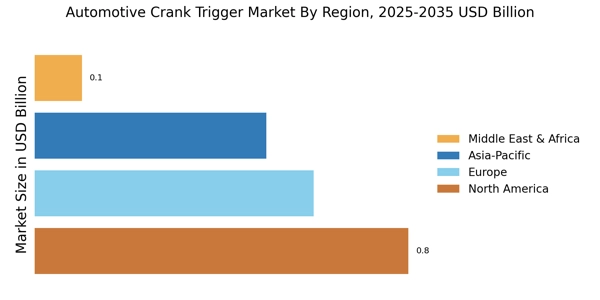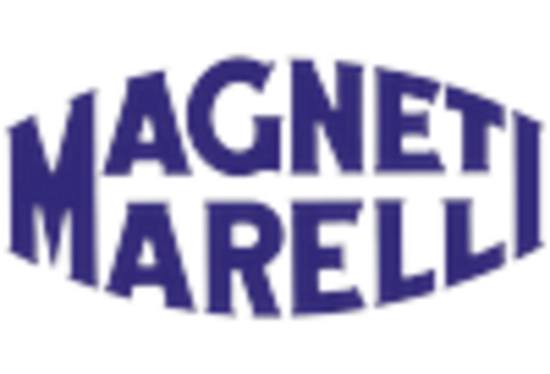Technological Advancements
The Automotive Crank Trigger Market is experiencing a surge in technological advancements, particularly in sensor technology and electronic control units. These innovations enhance the precision and efficiency of engine timing, which is crucial for performance and emissions control. As vehicles become increasingly sophisticated, the demand for advanced crank trigger systems is likely to rise. For instance, the integration of digital signal processing in crank triggers allows for improved accuracy in engine management systems. This trend is supported by the growing emphasis on performance optimization in modern vehicles, which could potentially drive market growth. Furthermore, the increasing adoption of electric and hybrid vehicles necessitates the development of specialized crank trigger systems, thereby expanding the market's scope.
Growth of Electric Vehicles
The Automotive Crank Trigger Market is poised for growth due to the increasing prevalence of electric vehicles (EVs). As the automotive landscape shifts towards electrification, the need for specialized crank trigger systems that cater to electric drivetrains is becoming apparent. Although traditional crank triggers are primarily associated with internal combustion engines, the adaptation of these systems for EV applications is gaining traction. The Automotive Crank Trigger Market is projected to grow significantly, with estimates suggesting a compound annual growth rate of over 20% in the coming years. This growth presents a unique opportunity for the automotive crank trigger market, as manufacturers explore innovative designs that enhance the performance and efficiency of electric drivetrains. The integration of advanced technologies in crank trigger systems could potentially redefine their role in the evolving automotive sector.
Increased Vehicle Customization
The Automotive Crank Trigger Market is influenced by the trend of increased vehicle customization. As consumers seek personalized driving experiences, manufacturers are responding by offering customizable engine components, including crank trigger systems. This shift towards customization allows for enhanced performance tuning and aesthetic modifications, catering to a diverse range of consumer preferences. Data indicates that the aftermarket for automotive parts, including crank triggers, is expanding, with a notable increase in demand for performance-oriented components. This trend is particularly evident among automotive enthusiasts who prioritize unique modifications. Consequently, the automotive crank trigger market is likely to benefit from this growing segment, as manufacturers develop versatile and adaptable crank trigger solutions that meet the specific needs of consumers.
Rising Demand for Fuel Efficiency
In the Automotive Crank Trigger Market, the rising demand for fuel efficiency is a pivotal driver. As consumers become more environmentally conscious, manufacturers are compelled to develop vehicles that consume less fuel and produce lower emissions. Crank trigger systems play a vital role in optimizing engine performance, which directly impacts fuel efficiency. According to recent data, vehicles equipped with advanced crank trigger technologies can achieve up to 15% better fuel economy compared to traditional systems. This trend is further fueled by regulatory pressures aimed at reducing carbon footprints, prompting automakers to invest in innovative crank trigger solutions. Consequently, the market for automotive crank triggers is likely to expand as manufacturers seek to meet these evolving consumer and regulatory demands.
Regulatory Compliance and Emission Standards
The Automotive Crank Trigger Market is significantly impacted by stringent regulatory compliance and emission standards. Governments worldwide are implementing increasingly rigorous regulations aimed at reducing vehicular emissions and enhancing fuel efficiency. Crank trigger systems are integral to achieving these objectives, as they directly influence engine timing and performance. Manufacturers are thus compelled to innovate and enhance their crank trigger technologies to comply with these regulations. Recent data suggests that vehicles equipped with advanced crank trigger systems can reduce emissions by up to 30%, making them essential for meeting current and future standards. This regulatory landscape not only drives demand for more efficient crank trigger systems but also encourages research and development efforts within the industry, potentially leading to breakthroughs that further enhance performance and sustainability.


















Leave a Comment